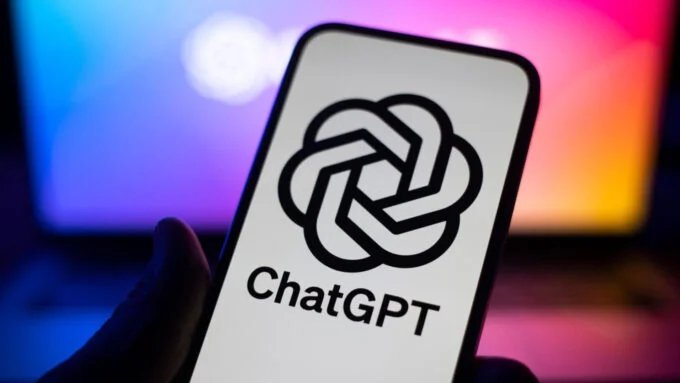Advancements in ChatGPT’s Memory Functionality
Recent updates from OpenAI indicate improvements in ChatGPT’s ability to retain and recall information from past interactions. The new upgrades to ChatGPT mark a significant step in enhancing its memory capabilities. These advancements allow ChatGPT to remember previous conversations more effectively and use that information to provide more relevant responses.
Users should note that these memory enhancements are automatically active for those who had enabled memory features in the past. This move suggests a proactive approach by OpenAI to ensure a seamless transition and enhanced user experience. Current discussions surrounding the possibility of expanding ChatGPT’s memory further suggest that while the existing update has been substantial, there might be additional enhancements in the future.
While there is no official confirmation of when or if the memory capacity will see a direct increase through paid plans, user inquiries highlight a desire for more extensive memory options. As OpenAI continues to innovate and user needs evolve, addressing memory capacity will likely be an area of ongoing development.
One common concern among dedicated users is the limitation they encounter with the tool’s memory being rapidly filled up. With the latest update, there seems to be a significant improvement addressing this issue, yet users still actively seek information regarding future expansions. The demand for larger memory capacity indicates a growing need for more advanced features that could support complex and lengthy interactions.
Understanding the implications of these upgrades for both casual and professional users of ChatGPT can help in anticipating how human-AI interactions will evolve. Continuous efforts to improve and expand the AI’s memory function are not only expected but necessary to meet the increasing demands of diverse user groups.
Managing ChatGPT’s Memory

ChatGPT has the capability to store conversations and personalize interactions based on past inputs. When users interact with ChatGPT across multiple sessions, this long-term memory feature enables more cohesive and contextual conversations, enhancing the overall user experience.
However, users might find themselves needing to reset or clear this stored memory. This could be for privacy reasons, to start fresh, or to troubleshoot issues. Luckily, users have several options to manage this memory:
- Individual Memory Deletion: Users can request ChatGPT to forget specific things. This is handy if the goal is to remove certain details without affecting the rest of the remembered information.
- Complete Memory Wipe: For a full reset, users have the option to clear all memories. This can be done within the settings panel. Specifically, one can navigate to the Personalization section, and under the Manage Memory function, choose to delete all stored data.
In 2025, OpenAI has made improvements in how ChatGPT handles memory. These updates include the increased capacity and nuanced control of memory—read more on Memory and new controls for ChatGPT. Additional guidance is available on managing the memory specifics, as detailed by the OpenAI Help Center in their Memory FAQ.
For those experiencing full memory notifications, there are community-shared methods to alleviate this, reflecting on new tricks that surfaced on online platforms like Reddit. Descript also elaborates on mastering ChatGPT’s memory in their article about ChatGPT’s Memory in 2025.
Any modifications to ChatGPT’s memory affect personalization and the AI’s ability to provide tailored responses. Users should consider this when deciding to clear or reset memory storage in ChatGPT.
Overcoming ChatGPT’s Memory Limitations
Users frequently encounter constraints with ChatGPT’s memory, which can affect longer conversations or complex tasks. To manage and potentially extend the capabilities of ChatGPT’s memory, consider the following strategies.
- Use Memory Refresh: Regularly revise the information ChatGPT holds by summarizing past interactions. This helps keep the context relevant and avoids overflow.
- External Tools: Integrate ChatGPT with external databases or applications that can store additional information and context.
- Settings Adjustment: In ChatGPT, settings to manage memory usage can be adjusted. Users can disable referencing saved memories to clear space for new interactions.
For developers looking for a more customized solution:
- Custom GPT Models: Develop custom GPT models that can be tailored with their own dedicated memory file. Enhancements to memory handling can be incorporated at the coding level to better suit specific needs.
By applying these approaches, users can better manage ChatGPT’s memory capacity and improve their experience with the AI.
Actions to Take When ChatGPT’s Memory is Maxed Out

If a user encounters a situation where ChatGPT indicates that its memory is at capacity, there are a few steps they can take to address the issue. First and foremost, it’s important to know that the AI’s memory management system is in place to ensure a personalized experience while maintaining privacy.
- Restart the Conversation: A user can initiate a new chat session, which effectively resets the memory related to the past interactions.
- Change Personalization Settings: In the settings menu, one has the option to disable memory. This can be done by navigating to Settings > Personalization > Memory.
Furthermore, OpenAI provides guides and forums where users can gain insights into managing ChatGPT’s memory. For instance, information about memory enhancement features is discussed on the OpenAI’s official forum. Users can find discussions and solutions like managing ChatGPT memory or troubleshooting issues when it’s not working as expected.
Should the standard solutions not suffice, technical users might consider more advanced options like creating a custom instance of GPT with tailored memory capabilities. For more specific instructions on this, users can refer to the shared experiences and solutions found on platforms such as Reddit and the OpenAI Developer Forum.
In case of persistent issues or for those looking to expand the AI’s memory beyond the default constraints, it may be worth exploring the use of other tools or services that support larger datasets. This information about enhancing the AI’s memory is also available within the OpenAI community discussions.
As ChatGPT evolves, so do the possibilities for its memory management. Users are encouraged to stay informed about the latest updates and strategies for optimizing their use of ChatGPT.
ChatGPT’s Current Maximum Memory Capacity

ChatGPT has evolved to integrate memory features, allowing it to recall previous interactions. As of now, the latest version available to Plus subscribers can process up to 8,000 tokens in its context window. This translates to around 6,000 words that ChatGPT can consider at once when generating responses, ensuring relevance and continuity in the conversation.
Subscribers have expressed a desire for further expansion of memory capabilities to accommodate more detailed and extensive exchanges. While the memory capacity may appear limited for some users, ongoing enhancements aim to optimize ChatGPT’s performance within the existing framework.
Managing ChatGPT’s Memory Utilization
To handle ChatGPT’s memory efficiently, users can apply several practical strategies.
- Limiting conversation length helps prevent the AI’s memory from being overloaded with excessive data.
- Clearing the cache periodically can also free up space, ensuring the bot runs without hiccups.
- Keeping ChatGPT’s software updated is crucial because new updates often optimize memory usage.
Users are also encouraged to leverage memory tracking tools to monitor the amount of memory being utilized. This allows for proactive management of memory resources before reaching full capacity.
A new feature, known as the MemoryPlugin, provides guidance on how to utilize existing memories or incorporate new ones into the conversation.
By grouping memories by themes, users have better oversight and can manage memories more systematically.
This thematic arrangement can also streamline the recall process, making interactions with ChatGPT more coherent and contextually relevant.
Furthermore, adopting user-controlled memory management practices can promote transparency and empower users to tailor ChatGPT’s memory according to their preferences.
To ensure that users do not need to repeatedly provide the same information in each session, OpenAI is working towards enabling cross-session memory. This advancement would greatly enhance ChatGPT’s capacity to serve as a long-term AI companion, maintaining the continuity and context of ongoing dialogs across multiple interactions.
Expanded Recall Capabilities of AI Conversations
OpenAI has enhanced its AI chatbot, ChatGPT, adding a much-awaited long-term memory function. This significant improvement enables the AI system to store and refer to past interactions with users, heightening the level of personalization in ongoing conversations.
Previously, ChatGPT offered a Memory feature that retained basic details from the dialogue, such as specific inquiries or adjustments made by the user. Expanding upon this, the memory upgrade now incorporates two key elements. Firstly, there are the saved memories, where the user proactively directs the chatbot to remember certain information. Secondly, the reference chat history allows ChatGPT to autonomously pull insights from previous discussions, refining its future responses.
The upgrade isn’t just for everyone—plus and pro users will be the first to experience these advancements. The $200 monthly Pro subscribers are already seeing these changes, while the ChatGPT Plus users, with a monthly subscription of $20, are anticipated to access the features shortly. Specialized plans like Team, Enterprise, and Edu will introduce these capabilities within a few weeks. The availability for free-tier users is still undecided.
For users concerned about privacy or preferring not to save their discussions, OpenAI has ensured flexibility with memory settings. Individuals may deactivate the saved memories in ChatGPT personalization settings or switch to a temporary chat mode where current inquiries do not influence the chatbot’s memory.
Areas such as the EU and a few other countries won’t see this rollout due to stringent AI regulations. Nonetheless, this extension of ChatGPT’s memory feature underscores a broader shift toward creating personalized AI that matures with the user, echoing similar developments by other machine learning entities like Google’s Gemini AI.
With this, OpenAI’s ChatGPT steps closer to delivering an AI companion that can evolve, mirroring authentic human interaction patterns. Whether discussing interests, preferences, or revisiting past conversations, the chatbot is now better equipped to provide nuanced and customized engagements. Users, especially those with varied use cases and who rely on AI systems for extended interactions, stand to benefit from this enhancement.
ersations Better**
In an exciting development for artificial intelligence enthusiasts and everyday users alike, ChatGPT has recently been upgraded with a new memory feature that promises to significantly enhance user interactions. This advancement came from OpenAI, the brains behind the AI powerhouse, aiming to create more seamless and personalized conversations.
The innovative memory update allows ChatGPT to remember facts, preferences, and past interactions with users across sessions. Previously, each new session with ChatGPT was essentially a blank slate, devoid of any recollection of prior exchanges. With this new capability, however, the AI can now retain information such as your name, favorite activities, or specific instructions you have previously given, and weave this knowledge into future conversations.
This functionality, which is being gradually rolled out, represents a shift towards a more intuitive and adaptive user experience. By allowing ChatGPT to build a memory based on interactions, users can expect more contextually aware responses, mimicking a more human-like conversation partner.
Importantly, users have control over the memory feature; it is designed to enhance user privacy and personalization. Users can view what the AI remembers and have the ability to modify or delete specific memories, ensuring that they have a say in their data and interaction history.
The memory upgrade is part of OpenAI’s ongoing effort to refine its offerings and cater more closely to user needs, solidifying ChatGPT’s role as a versatile and indispensable tool for professionals, students, and anyone looking to engage in informative dialogues. This move not only marks a technical milestone but also sets the stage for further advancements in artificial intelligence communication.






































Comments 2